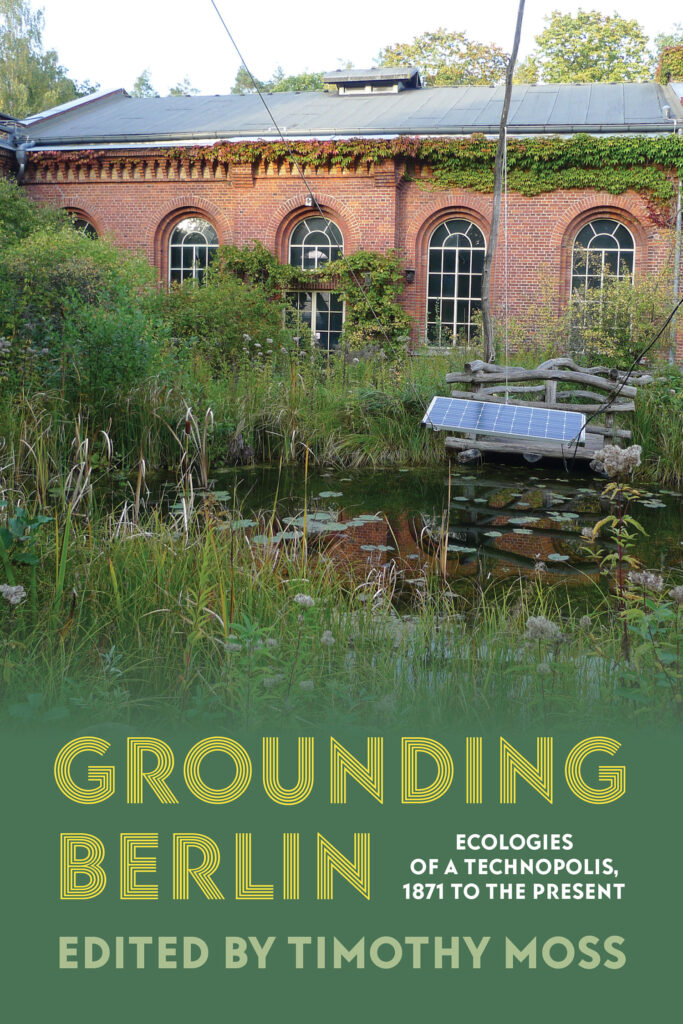
Steiner, Marion: ‘Electropolis Berlin – A New Urban Vision Fuelled by Coal and Imperial Ambitions’. En: Timothy Moss (ed.): Grounding Berlin. Ecologies of a Technopolis, 1871 to the Present. Pittsburgh: University of Pittsburgh Press, series History of the Urban Environment, 2025, Chapter 1, pp. 31-56, ISBN 9780822948322 (offprint)
Abstract. In its “Golden Twenties,” Berlin was renowned internationally as the most modern city in Europe. As “Electropolis,” the city had turned into a symbol for technical modernity and a new urban vision, with its dynamic growth inspiring creative works such as Fritz Lang’s film “Metropolis” or Walther Ruttmann’s “Symphony of a Great City,” both screened for the first time in 1927. However, this impressive dynamism was the fruit of earlier developments, which, to date, have generally been treated as success stories only. The purpose of this chapter is to analyse how the fossil logic and convictions of Berlin’s new entrepreneurial elites, who used coal from Silesia and the Ruhr to generate electricity in power plants within and outside the growing city, got embedded in the practice and visioning of Electropolis. This type of new, fossil-fuelled electric infrastructure not only was closely intertwined with urban expansion in Berlin, but also became a model that was adopted by hundreds of other cities around the world. Thus, a new technical dispositive emerged that dominated thinking on modernity for over a century, not only in Europe, but on a global scale. This happened within a geopolitical context where access was available to important coal-mining regions still part of the national territory and where technology transfer was pushed by imperial ambition to conquer electricity markets worldwide. It is no coincidence, the chapter concludes, that Berlin became Electropolis in the wake of the Second Industrial Revolution, when the recently united German Reich, together with the USA, emerged as a new potential hegemonic power, challenging the British Empire.
The book. Grounding Berlin explores the city’s pioneering contributions to urban technology and urban ecology in Europe and around the world over the past 150 years. Following the 1871 unification of Germany, Berlin experienced rapid industrialization and urbanization. Providing the necessary energy, water, waste removal, and land required massive interventions in the city and its surrounding region. As Berlin transformed nature in the name of urban modernism, it earned a global reputation as a technopolis. This reputation for innovation in urban technology was fanned in the Weimar Republic and revived—in very different ways—in West Berlin to cope with political isolation after 1949, to embrace a sustainability agenda in the early years of the reunified city, and to decarbonize the city today. Berlin is an instructive case study for understanding the ambitions and tensions involved in transforming environments through technology across highly diverse political regimes. More broadly, the book advances envirotech history as a productive lens for studying shifting relationships between society, nature, and technology in cities.
**
My participation to the book is an outcome of previous encounters with the editor Timothy Moss at the BZI Online Forum 2020 and the Research Workshop at the Max Planck Institute for the History of Science in Berlin in 2023, of my participation of the international research network “Berlin’s environmental and infrastructure history”, and of my ANID-FONDECYT research project “Luz, Poder y Progreso” (2023-2026).
The book was published in April 2025 and officially launched in June; orders can be placed here. In October 2025 I participated in a presentation of the book at the Centre Marc Bloch in Berlin. An offprint of my chapter is available here.


